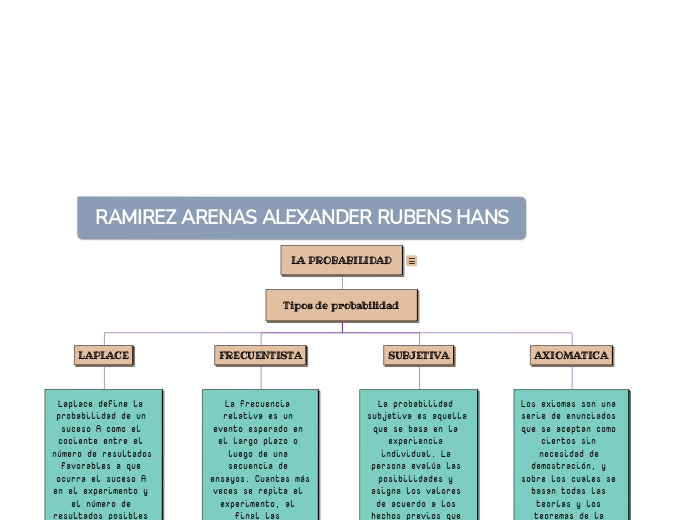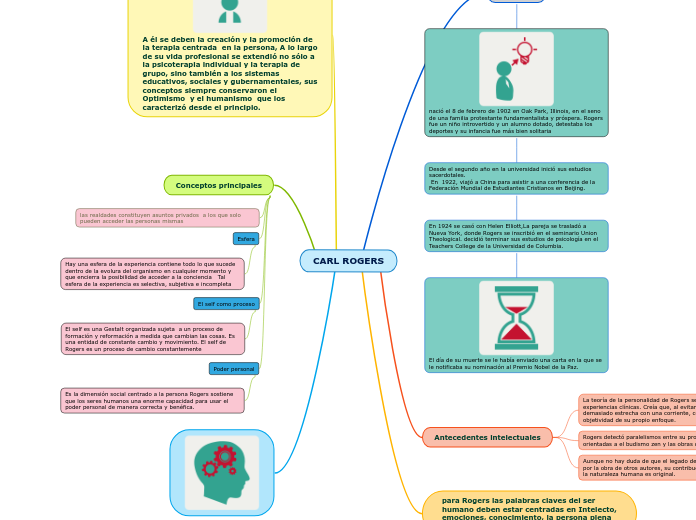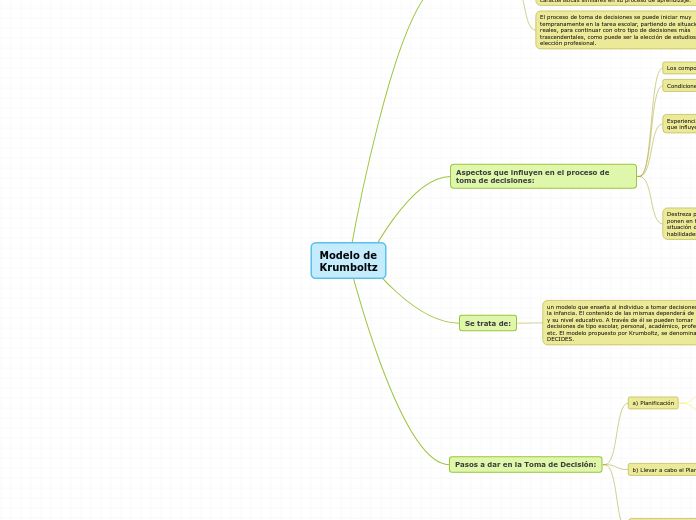RAMIREZ ARENAS ALEXANDER RUBENS HANS
LA PROBABILIDAD
Type in the name of the multiple-perspectives text.
Example: Bridge to Terabithia by Katherine Paterson
Tipos de probabilidad
Identify an important issue from the text that is being presented from different angles. Type it in.
Example: Jesse's drawing talent.
AXIOMATICA
Decide on the fourth point of view
Type in the name of the last character whose perspective on the issue you are going to present.
Example: Leslie Burke, Jesse's new next-door neighbor, and best friend.
Los exiomas son una serie de enunciados que se aceptan como ciertos sin necesidad de demostración, y sobre los cuales se basan todas las teorías y los teoremas de la ciencia.
Point of view
Type in a relevant quote that highlights the character's point of view. Try to follow a citation format: author's name, chapter, and page.
Example: I can't get the poetry of the trees,' he said. She nodded. Don't worry,' she said. You will someday. He believed her.' (Paterson, 4. 24)
How is the viewpoint introduced in the story?
Choose an answer:
First person point of view - using the personal pronouns 'I' or 'we'Second person point of view - using the personal pronoun 'you'Third person point of view - using the third-person pronouns 'he', 'she' and 'they'Omniscient point of view - an all-seeing observer tells the story
Tenemos una mina donde extraemos oro, plata y plomo, sabemos de los minerales que vamos a extraer de este deposito, así que es improbable que encontremos algún deposito de piedras preciosas o algún otro metal como el cobre o el litio.
SUBJETIVA
Whose character does the third point of view belong to?
Type in his/her name.
Example: Mr. Aarons, Jesse's father.
La probabilidad subjetiva es aquella que se basa en la experiencia individual. La persona evalúa las posibilidades y asigna los valores de acuerdo a los hechos previos que conoce. Es posible vincular la probabilidad subjetiva a una frecuencia relativa o a una conjetura.
What does the character think, say or do that suggests their perspective on the issue?
Type in a quote and try to maintain the citation format.
Example: 'He would like to show his drawings to his dad, but he didn't dare. (...) He'd thought his dad would be pleased. He wasn't. What are they teaching in that damn school? he had asked.' (Paterson, 2.8)
What kind of narration introduces the viewpoint?
Choose an answer:
First person point of view - using the personal pronouns 'I' or 'we'Second person point of view - using the personal pronoun 'you'Third person point of view - using the third-person pronouns 'he', 'she' and 'they'Omniscient point of view - an all-seeing observer tells the story
Un perforista intenta calcular la probabilidad de encontrar de nuevo la veta basándose en la experiencia que tiene pues esta se perdió cuando se encontró con una falla, esto una probabilidad subjetiva porque la persona no está realizando ningún cálculo matemático, sino que se fundamenta en su intuición.
FRECUENTISTA
Decide on the second point of view
Name the character (it can either be the main character or one of the supporting characters) whose point of view you are presenting.
Example: Miss Edmunds, Jesse's music teacher.
La frecuencia relativa es un evento esperado en el largo plazo o luego de una secuencia de ensayos. Cuantas más veces se repita el experimento, al final las posibilidades de que ocurra cada uno de los sucesos será regular.
Type in a quote that points out the character's position about the issue.
Try to follow a citation format: author's name, chapter, and page.
Example: 'She said he was unusually talented, and she hoped he wouldn't let anything discourage him.' (Paterson, 2. 8)
How is the viewpoint introduced in the story?
Choose an answer:
First person point of viewSecond person point of viewThird person point of viewOmniscient point of view
Cuando repetimos el experimento muchísimas veces. Por ejemplo, si sacamos una muestra. Si se analiza 50 veces una muestra en laboratorio puede salir 20 veces 8% de cobre y 30 veces 7% de cobre
LAPLACE
Decide on the first point of view you are going to present.
Type in the name of the character (it can either be the main character or one of the supporting characters) whose point of view belongs to.
Example: Jesse Oliver Aarons, Jr., the main character of the novel, a fifth-grader living in a rural Southern area.
Laplace define la probabilidad de un suceso A como el cociente entre el número de resultados favorables a que ocurra el suceso A en el experimento y el número de resultados posibles del experimento.
Type in a relevant quote that highlights the character's point of view towards
Tipos de probabilidad.
Try following a citation format: author's name, chapter, and page.
Example: 'Jesse drew the way some people drank whiskey. (...) Lord, he loved to draw. (...) When he was in first grade, he told his father that he wanted to be an artist when he grew up.' (Paterson, 2. 7)
EJEMPLO
What type of narration introduces the viewpoint?
Choose an answer:
First person point of view - using the personal pronouns 'I' or 'we'Second person point of view - using the personal pronoun 'you'Third person point of view - using the third-person pronouns 'he', 'she' and 'they'Omniscient point of view - an all-seeing observer tells the story
En una mediana minera existe 10 accidentes mensuales, sabemos que hay 200 trabajadores ¿cual sera la probabilidad de que pueda ocurrir un accidente a un trabajador?









